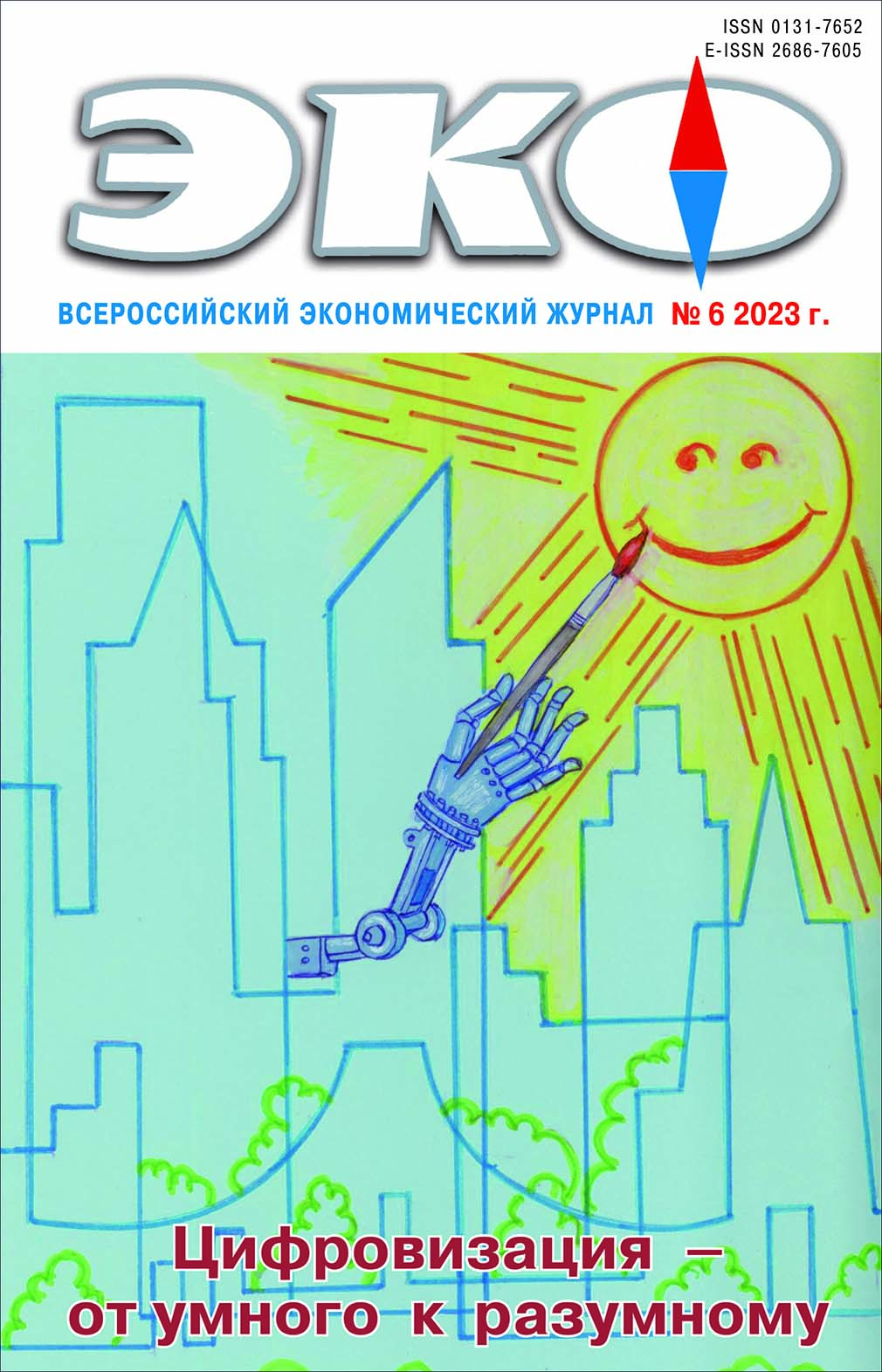CROSS-BORDER INTERACTION
Published 2023-05-30
Keywords
- foreign trade; export; import; commodity turnover; commodity nomenclature; oil and gas sector; railroads; Kazakhstan; Siberia; Russia
How to Cite
1.
Sherin Е. Foreign Trade Cooperation between Kazakhstan and Siberian Regions. ECO [Internet]. 2023 May 30 [cited 2025 Dec. 16];53(6):137-51. Available from: https://ecotrends.ru/index.php/eco/article/view/4620
Abstract
The paper examines the sectoral and geographical structure of Kazakhstan’s foreign trade cooperation with Russia and Siberian regions. It characterizes the modern model of Kazakhstan’s economy and the role of the oil and gas sector in it. The geographical and commodity structures of Kazakhstan’s exports and imports and Russia’s place in the country’s foreign trade turnover are shown. The significance of foreign trade and industrial cooperation with Kazakhstan for the Siberian regions was determined. The problem places in their foreign trade cooperation are revealed. Taking into account the changed foreign policy situation in 2022, several options to intensify cooperation between Kazakhstan and Russia in general and Siberian regions in particular were proposed. An alternative route for the transportation of Siberian bulk cargoes to the East Asian market is proposed. Attention is paid to the issues of creating an international transport corridor, the need to increase the depth of processing of exported raw materials, increasing non-resource cooperation between the two countries, electricity supplies to Kazakhstan, the establishment of mutual settlements in a single conventional unit.References
- Бородавкин А.Н. Россия и Казахстан – союзники и интеграционные партнеры // The Eurasian. 2019. № 32-33. С. 4–9.
- Давыдова Ю.А., Каргаполова Е.В. Сотрудничество России и Казахстана как вектор евразийской интеграции // Евразийская интеграция: экономика, право, политика. 2022. Т. 16. № 2. С. 51–60. DOI: 10.22394/2073-2929-2022-02-51-60
- Карпенко М.С. Приграничное измерение евразийской интеграции России и Казахстана: вызовы для сотрудничества // Известия Российской академии наук. Серия географическая. 2019. № 1. С. 24–36. DOI: 10.31857/S2587-55662019124-36
- Кузнецов А., Винокуров Е. (ред.) Мониторинг взаимных инвестиций ЕАБР. Доклад 21/4. М.: Евразийский банк развития, 2021. 45 с.
- Кушалиев Е.Т., Таштемханова Р.М., Жанбулатова Р.С. Ресурсно-энергетический комплекс Казахстана: проблемы и перспективы на современном этапе // Concorde. 2018. № 3. С. 71–79.
- Мигранян А.А. Экономика Казахстана: потенциал и риски развития в условиях турбулентности // Геоэкономика энергетики. 2021. Т. 15, № 3. С. 146–162. DOI 10.48137/2687-0703_2021_15_3_146
- Мырзахметова А.М., Алшимбаева Д.У., Туркеева К.А., Еримпашева А.Т. Торгово-экономическое сотрудничество Казахстана и России: особенности и приоритеты развития // Экономика: стратегия и практика. 2020. Т. 15. № 3. С. 127–139.
- Семенов Е.А. Освоение целинных земель России и Казахстана: предпосылки и экономические итоги // Вестник Оренбургского государственного университета. 2012. № 13 (149). С. 318–322.
- Цветков В.А., Дудин М.Н. Внешнеэкономическое сотрудничество России и Казахстана: от истории к современности // Проблемы рыночной экономики. 2019. № 1. С. 80–92. DOI: 10.33051/2500-2325-2019-1-80-92
- Шерин Е.А. Географические направления и масштабы экспорта сибирских углей // ЭКО. 2018. № 8. С. 148–160. DOI: 10.30680/ECO0131-7652-2018-8-148-160
- Энтина Е.Г., Коломин В.О., Тангаева А.В., Великих Г.П., Ерохина С.А., Наджаров А.М., Давронова С.Б. Россия и Казахстан – драйверы регионального развития. Доклад Петербургского международного экономического форума. Санкт-Петербург: Росконгресс, НИУ Высшая школа экономики, 2022. 44 с.
- Pieper M. The linchpin of Eurasia: Kazakhstan and the Eurasian economic union between Russia’s defensive regionalism and China’s new Silk roads. International Politics. 2020. Vol. 58 (2). P. 462–482. DOI: 10.1057/s41311-020-00244-6

